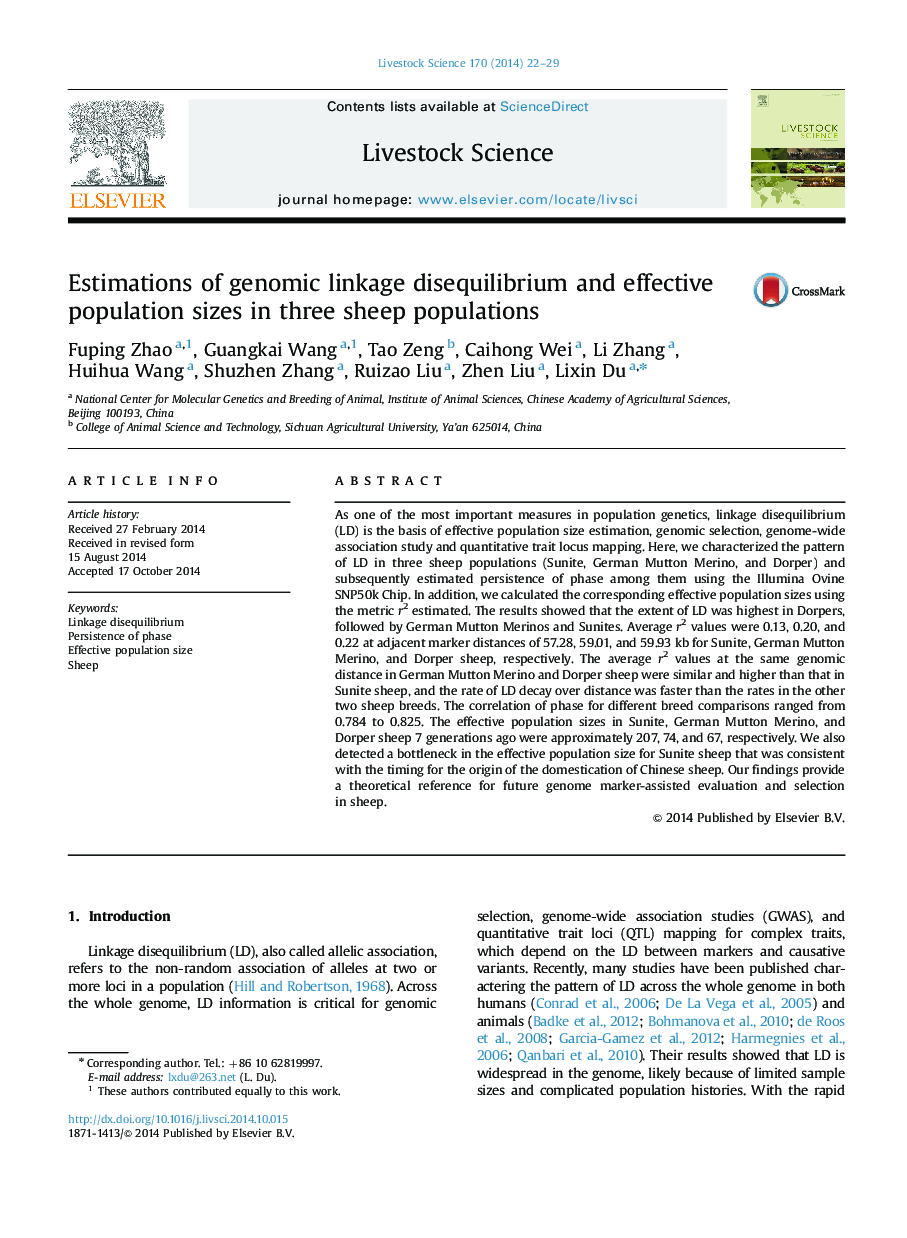| کد مقاله | کد نشریه | سال انتشار | مقاله انگلیسی | نسخه تمام متن |
|---|---|---|---|---|
| 2447161 | 1553962 | 2014 | 8 صفحه PDF | دانلود رایگان |
As one of the most important measures in population genetics, linkage disequilibrium (LD) is the basis of effective population size estimation, genomic selection, genome-wide association study and quantitative trait locus mapping. Here, we characterized the pattern of LD in three sheep populations (Sunite, German Mutton Merino, and Dorper) and subsequently estimated persistence of phase among them using the Illumina Ovine SNP50k Chip. In addition, we calculated the corresponding effective population sizes using the metric r2 estimated. The results showed that the extent of LD was highest in Dorpers, followed by German Mutton Merinos and Sunites. Average r2 values were 0.13, 0.20, and 0.22 at adjacent marker distances of 57.28, 59.01, and 59.93 kb for Sunite, German Mutton Merino, and Dorper sheep, respectively. The average r2 values at the same genomic distance in German Mutton Merino and Dorper sheep were similar and higher than that in Sunite sheep, and the rate of LD decay over distance was faster than the rates in the other two sheep breeds. The correlation of phase for different breed comparisons ranged from 0.784 to 0.825. The effective population sizes in Sunite, German Mutton Merino, and Dorper sheep 7 generations ago were approximately 207, 74, and 67, respectively. We also detected a bottleneck in the effective population size for Sunite sheep that was consistent with the timing for the origin of the domestication of Chinese sheep. Our findings provide a theoretical reference for future genome marker-assisted evaluation and selection in sheep.
Journal: Livestock Science - Volume 170, December 2014, Pages 22–29
